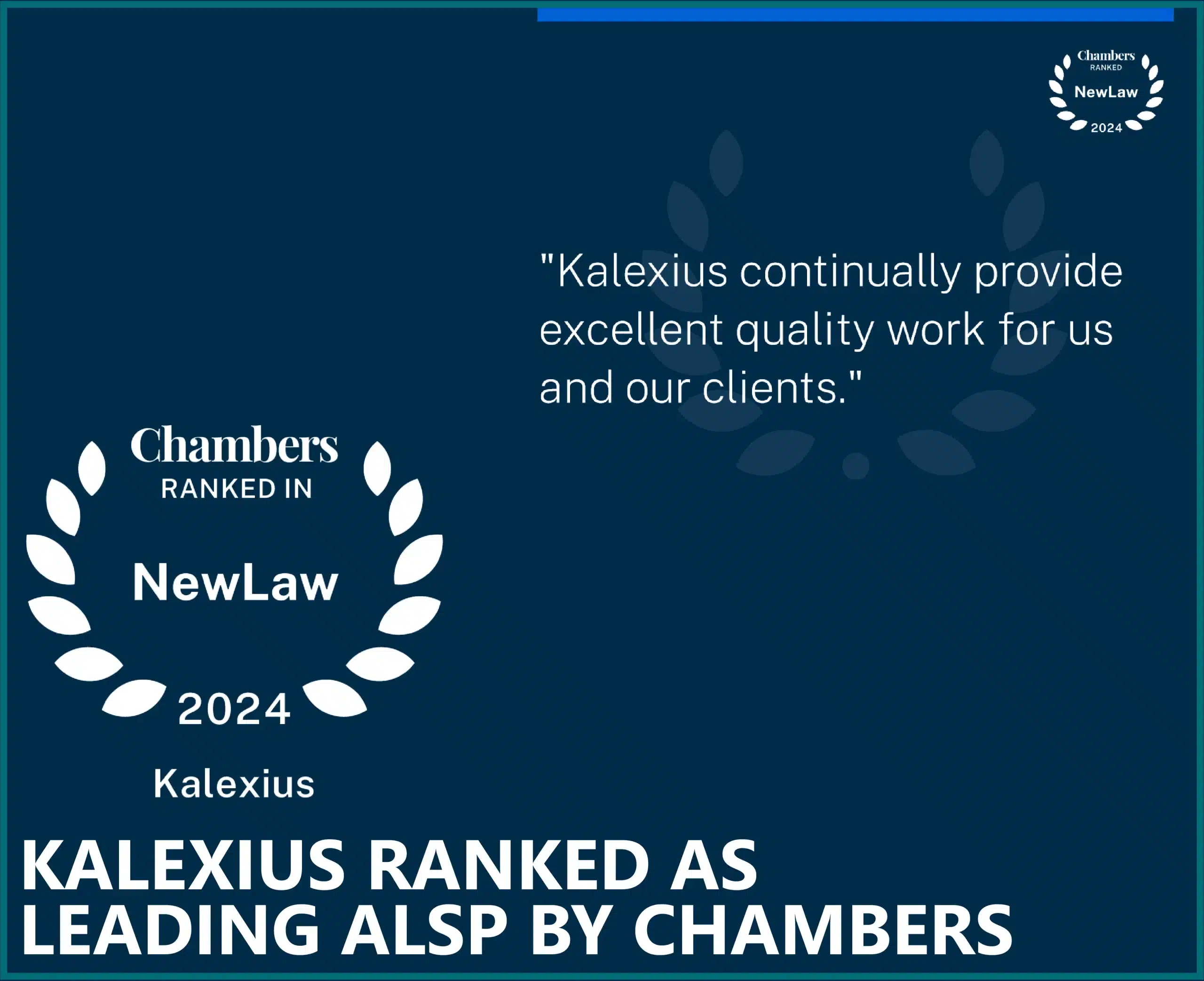
At Kalexius we often hear that in-house lawyers are stretched ever thinner as permanent headcount stays the same while volumes of work increase.
Many in-house teams put a sticking plaster on their problems by using contractors and secondees to do the work. Since resourcing is part of our business model as an alternative legal services provider (ALSP), we’re happy to help those clients. That said, we would much rather be working with clients to address the underlying issues facing their legal department.
It is an unfortunate fact of life that corporate back office functions get scrutinised and challenged on their budget. While Legal has often received less scrutiny than other functions, the law of diminishing returns in other corporate functions means that the spotlight will eventually be turned onto legal – if it hasn’t already.
Want to stay ahead of the corporate grim reaper and proactively manage your function? Here are some simple steps to get you back in control.
1. Ensure stakeholder happiness
As simple as it sounds, a stakeholder survey can yield tangible results.
You’ll understand in more granular detail what your stakeholders (i.e. your internal customers) in the business see as important.
For example, what if your stakeholders don’t care about the legacy patent estate you have been maintaining in-house for years? Once you know this, you can look at lower cost options (e.g. outsourcing an element) or stop providing the service altogether.
Budget and resources can be moved to higher priority areas once the low and high priority areas are understood.
Actions off the back of stakeholder surveys prove to your peers that you are in control and are paying them attention. You might also gain more allies at the leadership table when budget cuts are being discussed in the future.
2. Know your numbers
Many of the in-house GC’s we speak to do not have a detailed view of their budget position.
The in-house budget is usually split between the headcount costs of in-house staff and spend with third parties (e.g. law firms).
In order to know whether you will hit budget this financial year, each month you need to know:
- How your headcount costs are changing (i.e. starters, leavers, contractors) and have a robust approval process in place for new starters and new contractors so there are no surprises;
- The existing third party commitments for the remainder of the financial year and how these are tracking. Large purchase orders to law firms are normally raised with room to spare so it is important to receive regular feedback from the in- house lawyer managing the matter and adjust projections accordingly. Pressure should be applied to law firms to stick to fee estimates such that there is budget certainty.
- Any new third party commitments that have been made. These will normally be via purchase order or equivalent – if there is a robust approval process the commitment will already have been vetted by someone in the Legal leadership team with budget
3. Record matters coming into the department (‘Front Door’)
This might seem obvious, but the reality is that most in-house legal functions we come across simply do not possess the detail on the work undertaken in-house.
In private practice, time recording and billing enable a granular approach to workload. By contrast, in-house lawyers often say they prefer being in-house precisely because they don’t need to record time.
While time recording for in-house lawyers may be a bridge too far, having a ‘Front Door’ for Legal through which all matters come is needed to understand what the department does.
Basic information can be recorded when the matter comes through the ‘Front Door’:
- The functional area (e.g. Employment/Labour) and the work type (e.g. Employment Tribunal – Discrimination Claim);
- The complexity of the matter (taking into account relative risk and value);
- The in-house lawyer allocated to the matter, or if being sent externally, the law firm or ALSP the matter is sent.
The benefits that this approach brings include:-
- An understanding of the volume breakdown including seasonal peaks and troughs (e.g. around financial year end);
- The workload of different teams is (to some extent) comparable;
- The need for additional headcount, contractors or instruction of third-party firms is justifiable;
- Matters to be funded outside of the legal budget can be easily.
4. Make informed decisions about what stays in-house
When adopting the approach detailed above and understanding stakeholder priorities, budget/spend and the workload of the department, you will have all necessary inputs to create a target operating model. In other words, the mission and priorities of your function can be defined along with an operating model aligned to them.
Under your new operating model you will now be able to define:
- Which types of work stay with in-house lawyers;
- What low level work could be suitable for self-service by the business;
- The types of matter that should be sent to external law firms;
- Work types (e.g. volume contract work) that could be outsourced to alternative legal service providers.
This means that work will end up being undertaken in the most optimal way i.e. by the right grade of person, in the right location at the right price.


